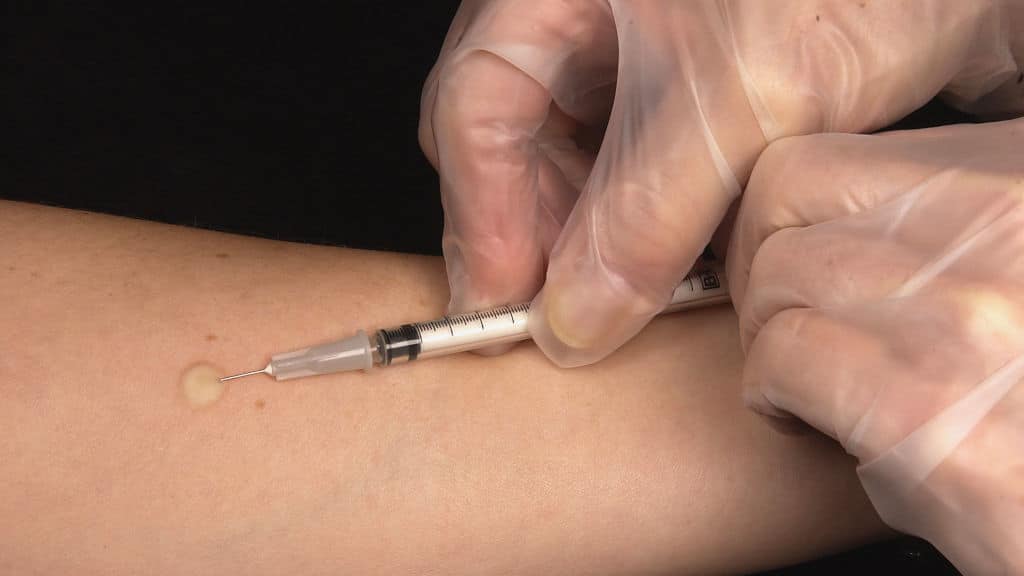Intra-arterial complications can arise from an array of different incidents, significantly through self-medication and medical malpractice.
According to the National Cancer Institute, intra-arterial means “within an artery (blood vessel that carries blood from the heart to tissues and organs in the body).”
For intravenous drug abusers, it is quite possible to hit an artery while trying to inject some medications into the veins. These incidents can, in turn, cause various complications, thereby leading to amputations and sometimes death. The same happens in the case of medical negligence.
Even though certain treatments are by nature intra-arterial, like intra-arterial chemotherapy, some medications should not come in contact with the artery.
If an artery is tampered with or inadvertently used instead of a vein, it can be fatal for the victim.
Sen (2005), in the article titled Complications After Unintentional Intra-Arterial Injections Of Drugs: Risks, Outcomes, And Management Strategies stated that “delivery of certain medications via arterial access has led to clinically important sequelae, including paresthesia, severe pain, motor dysfunction, compartment syndrome, gangrene, and limb loss.”
A legal animation is a reliable tool for demonstrating these effects to the jury.
With the possibility of these complications arising during treatments, health care providers possess a duty of care by law to protect their patients from the damnable effects of these mistakes.
They are to do this by ensuring that they have proper knowledge about the mode of administering different medications. They are also to ensure that mistakes that will tamper with the arteries are not made during medical treatment.

However, despite these expected level of knowledge, mistakes still occur.
Aghoutane (2011), in an article, gave a detailed case study of a 7-year-old girl who fell victim to poor medical care and suffered ‘intense pain, acute ischemia, and gangrene.
It must be noted that similar tragic cases constantly appear before the court.
Cases Of Intra-Arterial Complications And How 3D Animation Can Help
- Gangrene: Levine v. Wyeth
In this case, the plaintiff, who was suffering from nausea and migraine, was injected by the defendant with a drug called Phenergan at a community health center.
The first dose of the medication was administered by intramuscular injection. Seeing that she had not recovered, a second dose was administered through the veins.
The medication was mistakenly administered into an artery instead of the veins, which resulted in severe damage to the artery causing gangrene.
After several weeks without any improvements, the plaintiff’s hand and forearm were amputated.
In a situation like this, the plaintiff can use legal animation to prove a fault in both the medication and the medical provider to the jury for justice to be served.
- Amputation: DeLaughter v. Womack
Negligence and continuous medical inadequacy are seen in this case which can only be described as unfortunate.
In this case, a 4-year-old boy complained of discomfort in the ear. On getting to the hospital, a nurse was directed to give the child an injection of penicillin. The nurse gave an injection of flo-cillin in the left buttock.
After the injection, the child complained of pain and was taken back to the health center, where they were merely told to keep the leg outstretched and use ice packs to relieve the pain. This was repeated time and time again when complaints were made.
As the condition grew worse, since an artery had been tampered with, the foot of the boy had to be amputated. This is one of the saddening outcomes of intra-arterial complications and must not be taken with levity. A legal animation is a reliable tool to be used in court in this kind of situation.
- Lesion or abscess: Holman v. Grandview Hospital & Medical Centre
In this case, the plaintiff had been admitted to the hospital for spinal fusion surgery.
He was continually given intramuscular medication for the pain.
When he called for medication because of a pain he was experiencing in his back, he was treated and noticed that the injection came with sharp pain.
The injection had tampered with an artery.
He developed a lesion on his buttock and had to go through an incision and drainage surgery more than once.
He decided to approach the court with a case of negligence.
This is an unfortunate occurrence, and no one should have to go through it.
In this kind of situation, litigation animation is appropriate for getting the jury’s attention and winning the case.





